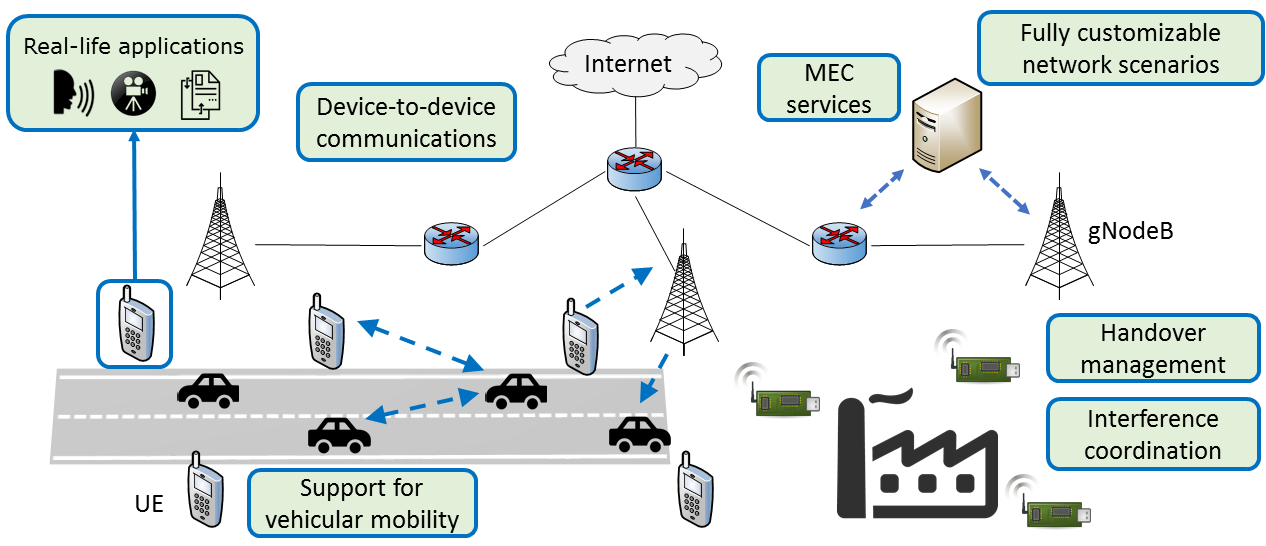
Simu5G: Simulator for 5G New Radio Networks¶
Simu5G is the evolution of the popular SimuLTE 4G network simulator that incorporates 5G New Radio access. Based on the OMNeT++ framework, it is written in C++ and is fully customizable with a simple pluggable interface. One can also develop new modules implementing new algorithms and protocols.
Using Simu5G¶
The idea behind Simu5G is to let researchers simulate and benchmark their solutions on an easy-to-use framework. It borrows the concept of modularity from OMNeT++ thus it is easy to extend. Moreover it can be integrated with other modules from the INET Framework. It offers support to optimization tools (e.g. optimization solvers such as CPLEX). Simu5G is compatible with SimuLTE, and allows one to simulate network scenarios where 4G and 5G coexist, in both StandAlone (SA) and E-UTRA/NR Dual Connectivity (ENDC) deployments. Furthermore, it inherits SimuLTE’s compatiblity with other OMNeT++-based libraries, for instance Veins for vehicular mobility.
System Requirements¶
Simu5G can be used on any system compatible with OMNeT++ (Windows, Linux or macOS). See OMNeT++ page for more info. Simu5G requires:
OMNeT++ v6.0.x
INET-Framework v4.5.x
For more information and installation instructions, see the Installation.
Main Features¶

User Terminals: Mobility; Interference; all types of traffic; handover; network-assisted D2D communications |
g-NodeB: Macro, micro, pico gNBs; SA and ENDC deployments; Carrier Aggregation; TDD/FDD with numerologies; support for handover; Scheduling algorithms: Max C/I, Proportional Fair, Round Robin, etc. |
Network emulation: Simu5G can also run as a network emulator, integrating an emulated 5G network with real networks and applications. |
RLC: UM and AM; segmentation and reassembly; retransmissions (AM only). |
MAC: Buffering; PDU concatenation; CQI reporting and reception; transport format selection and resource allocation; Coding designed to facilitate cross-layer analysis. |
PHY: H-ARQ; channel feedback computation; realistic channel models associated to CCs; correct reception based on SINR and BLER curves. |
|
Model of both MEC system-level and host-level entities: UALCMP, MEC orchestrator, MEC host, MEC platform, MEC services. Radio Network Information and Location Services are implemented. Fully compliant ETSI interfaces towards Device app and MEC app allow one to use real MEC application endpoints with 5G transport and MEC services based on information coming from the 5G network. |
||
Core contributors and funding¶
Simu5G is the result of a joint research project carried out by Intel Corporation and the Computer Networking Group of the University of Pisa, Italy. UniPi team: